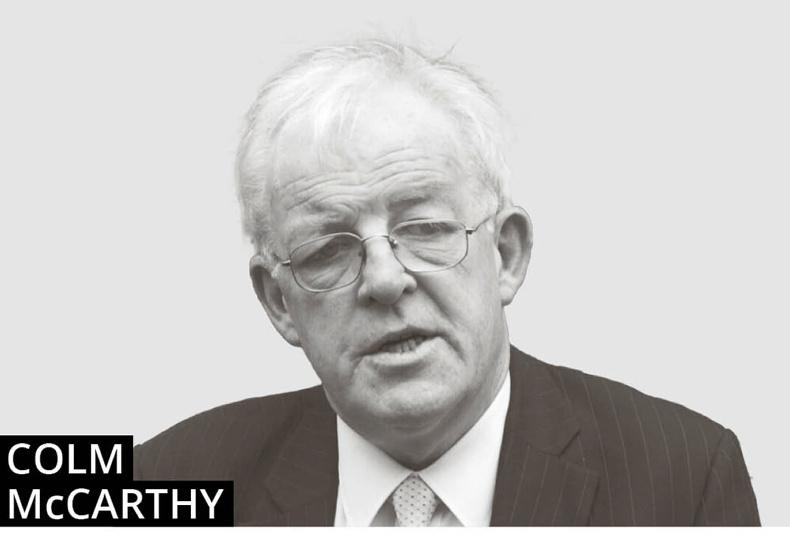All three of the principal EU figures dealing with the Brexit negotiations have now confirmed what has been obvious for months: that the UK government has failed to articulate a withdrawal strategy which is internally consistent. Chief Commission negotiator Michel Barnier, the European Parliament’s Guy Verhofstadt and Council president Donald Tusk have made it clear that a half-in, half-out deal with the EU’s internal market is not possible and there will be no withdrawal agreement, which means no transition deal post-Brexit, unless the UK government changes tack.
Physicist Erwin Schrodinger offered the metaphor of a cat concealed in a box with two compartments in an attempt to illustrate an indeterminacy arising in quantum mechanics. Apparently the condition of some atomic particles cannot be determined until they have been observed. They may, for example, occupy two distinct states simultaneously. Schrodinger imagined that the cat exists in two states, one alive and one dead, until the box is opened, whereupon its unique status is finalised. It is seen to be fit and healthy or a corpse, but no longer both.
The UK government’s desire to quit the EU while retaining the key rights of membership has likened the policy to Schrodinger’s famous cat and the EU officials have opened the box. They have pronounced that the cat is dead and has departed to feline paradise.
More specifically they have rejected Theresa May’s ‘‘three baskets’’ approach to post-Brexit trade in goods and services. This would see full single market participation for those items in basket one, a group in basket two where the UK and the EU would maintain mutual recognition of standards and a third basket where standards would diverge.
The single market is indivisible and the EU-27 will not permit any third country to carve it up in this fashion. They also distrust mutual recognition of standards, preferring full harmonisation.
Alternatives
The UK has been offered three alternatives for the post-Brexit relationship. These are full membership in the single market with a comprehensive customs arrangement, rejected by the UK government, a negotiated free trade deal as a third country (the recent deal with Canada being the most likely model) or no deal at all, a crash-out which nobody wants.
It appears that the UK has chosen the hardest route, which is a deal negotiated on Canada lines. This will certainly not achieve the ‘‘frictionless access’’ to which Theresa May refers in every speech. It would likely deliver zero tariffs for virtually all non-food goods but might offer very little for services. It would also mean customs barriers, and not just in Ireland.
However, there is a snag if the UK wishes to proceed to the negotiation of a bespoke third-country trade deal and the snag is the NI border. Only continued membership for the whole UK in the single market (ruled out by May) and de facto membership in the customs union (also ruled out) can deliver a hassle-free border. The UK has failed to come up with a wizard technological solution to create a border simultaneously effective and invisible. The fall-back is that NI stays in the internal market while enduring a new border with Britain in the Irish Sea. This has also been ruled out by the UK at the understandable insistence of the DUP, completing a hat-trick of red lines which precludes any solution at all.
There will be a European summit, commencing on 22 March, at which these matters will likely come to a head. The timetable is tight (Brexit Day is barely a year away) and the withdrawal agreement remains to be negotiated. This is meant to contain the transition agreement, without which the UK crashes out with no deal. The withdrawal agreement, in which NI is not the only contentious issue, needs to be finalised over the next six or seven months to permit ratification. The EU-27 has the UK over a barrel on the matter of timing.
Negotiations
Even if a withdrawal and transition agreement can be reached in time there must then be negotiations on the long-term trading arrangement. If it turns out to be a Canada-style deal, with lots of ambitious extra bells and whistles, there is a further snag. It would be what the lawyers call a ‘‘mixed’’ agreement, not capable of adoption simply by the European Council and Parliament. Each member state would also have to assent and in several cases this might have to be by referendum. Everybody with a bone to pick (Spain over Gibraltar?) would have a veto. Given the EU-27’s red line over NI it may never even come to this. The UK’s vagueness over Brexit strategy is running out of road.






 This is a subscriber-only article
This is a subscriber-only article










SHARING OPTIONS: